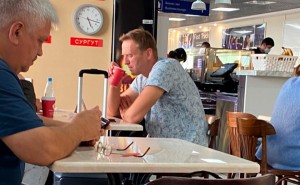Source: www.rucriminal.info
On the morning of August 20, during a flight from Tomsk to Moscow, the founder of the Anti-Corruption Foundation (FBK), Alexei Navalny, felt sick on the plane. According to his press secretary Kira Yarmysh, the politician said after takeoff that he was not feeling well, and asked for a napkin, he had perspiration. “I asked to talk to him, he wants to concentrate on the sound of his voice <...> I went to the toilet, after that I lost consciousness,” Yarmysh told RBC. One of the passengers posted a video: Navalny can be heard groaning at the tail of the plane. The plane made an emergency landing in Omsk. Navalny was hospitalized in the emergency hospital No. 1, in the toxic intensive care unit.

There the politician fell into a coma. Doctors assess Navalny's condition as serious; he was connected to a ventilator. Navalny was diagnosed with "toxic effects predominantly of the synaptic level." The source of the poisoning has not been established. Everyone is talking about tea, two glasses of which Navalny drank at the airport before departure. However, the ingestion of poison into the body solely through drinks or food is an outdated concept of such crimes. Sometimes it is enough to touch an object treated with a special substance, or, for example, to bring a telephone receiver to your face in order to get severe poisoning. At the disposal of Rucriminal.info were the materials of the criminal case on the murder of the head of Rosbusinessbank Ivan Kivelidi and his secretary Zara Ismailova. This crime received a huge response due to the way the massacre was committed. The attacker put a poisonous substance into the telephone receiver in Kivelidi's office. Studying the materials, we found that the symptoms of Navalny's poisoning completely coincide with the symptoms of poisoning in Kivelidi. Therefore, it is not necessary that the poison got into the politician's body through tea. It could be just an object that was momentarily in his hands or held by someone next to his face. We acquaint the reader with the materials of the Kivelidi case and publish the formula of the substance that killed the banker.
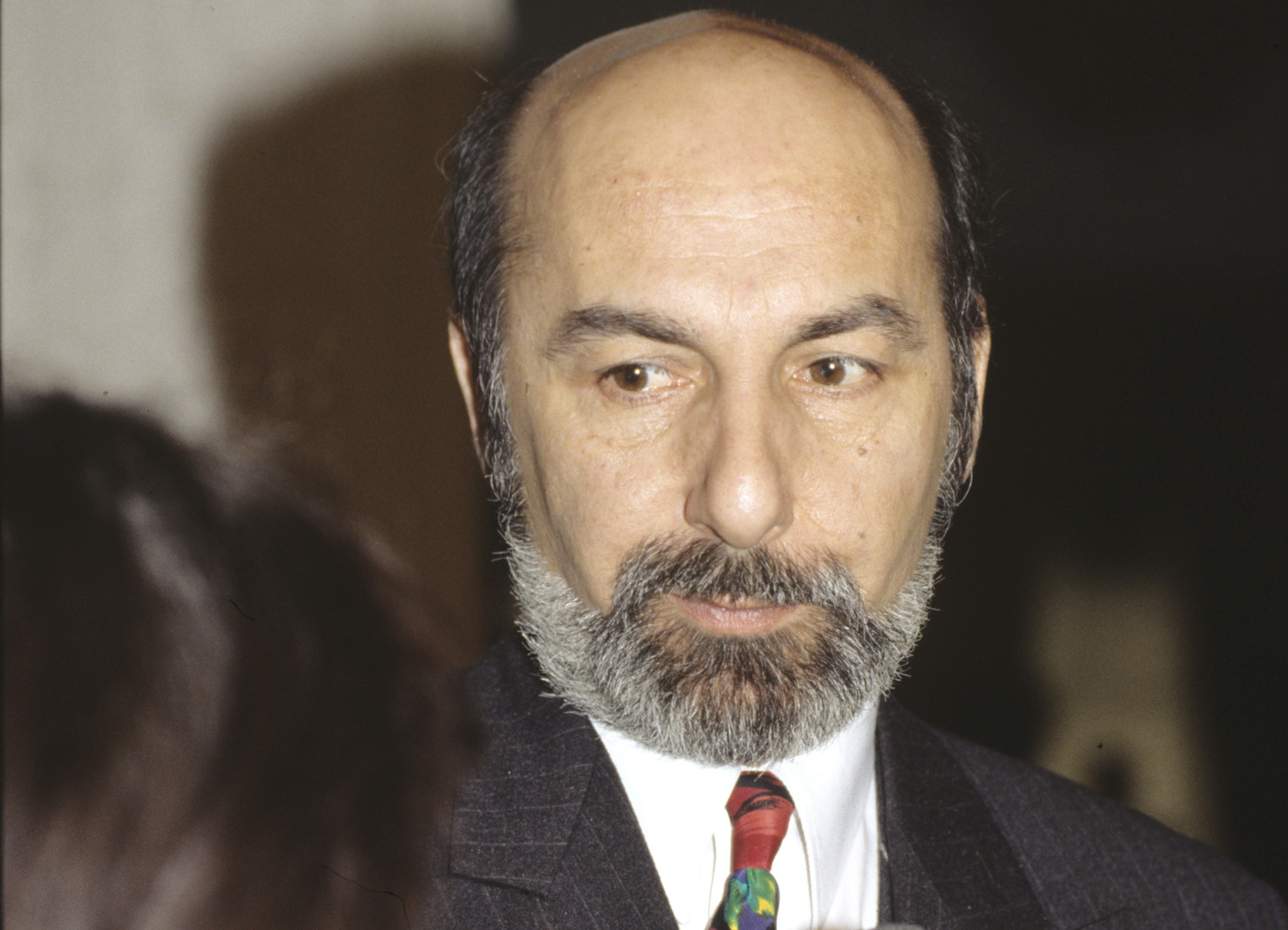
Instance 1 For internal use
CONCLUSION (M 2) of a forensic medical examination on the death of I. Kh. Kivelidi and Z. M. Ismailova, carried out by the VAKhZ specialists in accordance with the resolution of the city prosecutor's office. Moscow on September 6, 1995
I. Brief facts of the case. August 1, 1995 at 7:55 am to the Central Clinical Hospital (CDB) mountains. Moscow, the director of this bank, Kivelidi I.Kh, was taken from work (from Rosbiznesbank) in a coma. The patient's condition at the time of admission to the Central Clinical Hospital and in the following days was severe and extremely difficult. Despite the comprehensive examination and treatment carried out, Kivelidi I.Kh. died on August 4, 1995 at 9 hours 40 minutes without regaining consciousness. On August 2, 1995 at 18.00, the secretary of the director of this bank (secretary I.Kh. Kivelitsi) Ismailova Z.M. Ismailova was brought from work (from Rosbusinessbank) to the 1st City Clinical Hospital (GKB) at 18.00. in a coma. The patient's condition was extremely serious, and despite the measures taken to provide qualified medical care, the patient died on August 3, 1995, at 6 a.m. without regaining consciousness (i.e., 12 hours after admission)
2. The question put by the prosecutor's office for the permission of the examination: what substances or types of substances could cause the symptoms of intoxication in the victims?
3. Documents submitted for examination.
…….
Research results:
The victims (Kivelidi I.Kh. and Ismanlova Z.M.) had the following characteristic symptoms of intoxication: narrowing of the pupils of the eyes (miosis), deterioration of vision ("darkening in the eyes"), frothy discharge on the oral and nasal cavity, sweating, difficulty breathing, excitement and a sense of fear, drop in blood pressure and bradycardia (rare pulse) are periodically replaced by tachycardia, convulsions. Convulsions were especially pronounced in ZI Ismailova, which served as the basis for the doctor who arrived in the ambulance to diagnose the type of convulsive epileptic seizure. It should be noted that earlier Ismailova Z.M. I did not suffer from similar diseases with convulsive seizures. The indicated symptoms and the results of the clinical examination of the victims served as the basis for the following formulations to be reflected in the final diagnoses of the victims. In the diagnosis of Kivelidi I.X: "Acute poisoning with an unknown poison with multiple organ failure: cardiovascular, renal-hepatic and respiratory. Acute toxic encephalopathy with the development of cerebral edema, dislocation of the trunk and atonic coma, treated with extracorporeal methods .." ( etc. ). In the final diagnosis Ismailora 3.M….
As follows from the final diagnoses of the victims, in both cases, the specialists made diagnoses suggesting the intoxication of the victims with poison, which causes severe disorders of the central nervous system, cardiovascular system and respiratory system. The above symptoms of intoxication are characteristic of the action of substances that cause overexcitation of the cholinergic divisions of the nervous system. Such substances include cholinomimetics that directly interact with cholinergic receptors (muscarine, nicotine and other toxic substances of a similar type), as well as substances that inhibit cholinasterases of human tissues and organs (phosphorus-containing cholinesterase inhibitors, carbamates and other anticholinesterase substances). The fact of intoxication with cholinomimetics, in addition to the characteristic symptoms (miosis, frothy discharge from the mouth, sweating, etc.), is also confirmed by the fact that with the introduction of anticholinergics, partial relief of symptoms was noted: partial normalization of blood pressure after intravenous administration of I MT atropine (history of Kivelidi's disease I.Kh. P. 8). removal of miosis after instillation of amizil solution into the eye during examination by an ophthalmologist.
The results of the analysis of the blood of the corpses of Kivilidi I.Kh. and Ismailova 3.M. According to the biochemical department of the Bureau of Forensic Medicine dated 25.08. 1995 (conclusion B 791 on the blood of the corpse of Kevelidi I.Kh.) m dated 1I.08.95, the activity of cholinesterase in the blood of the corpse of Klvelidi I.U. and the blood of the corpse of Ismailova 3.M. sharply reduced and practically equal to zero. On this basis, it can be concluded that in both cases there was intoxication with a substance (or substances) with pronounced anticholinesterase properties.
Conclusions:
Based on the study, it can be concluded that the observed symptoms of intoxication Kivelidi I.Kh. and Ismailova 3.M. are characteristic of the action of substances that cause overexcitation of the parts of the human nervous system. The results of biochemical blood tests from the corpses of I.Kh. Kivelidi and Ismailova 3.M. by determination of the enzymatic activity of blood cholinesterases, in combination with other data, indicate that in this case there were acute intoxication of the victims with a substance or substances with a pronounced anticholinesterase effect.
Senior Researcher of the VAKHZ, Doctor of Medical Sciences, Professor N. Loshadkin
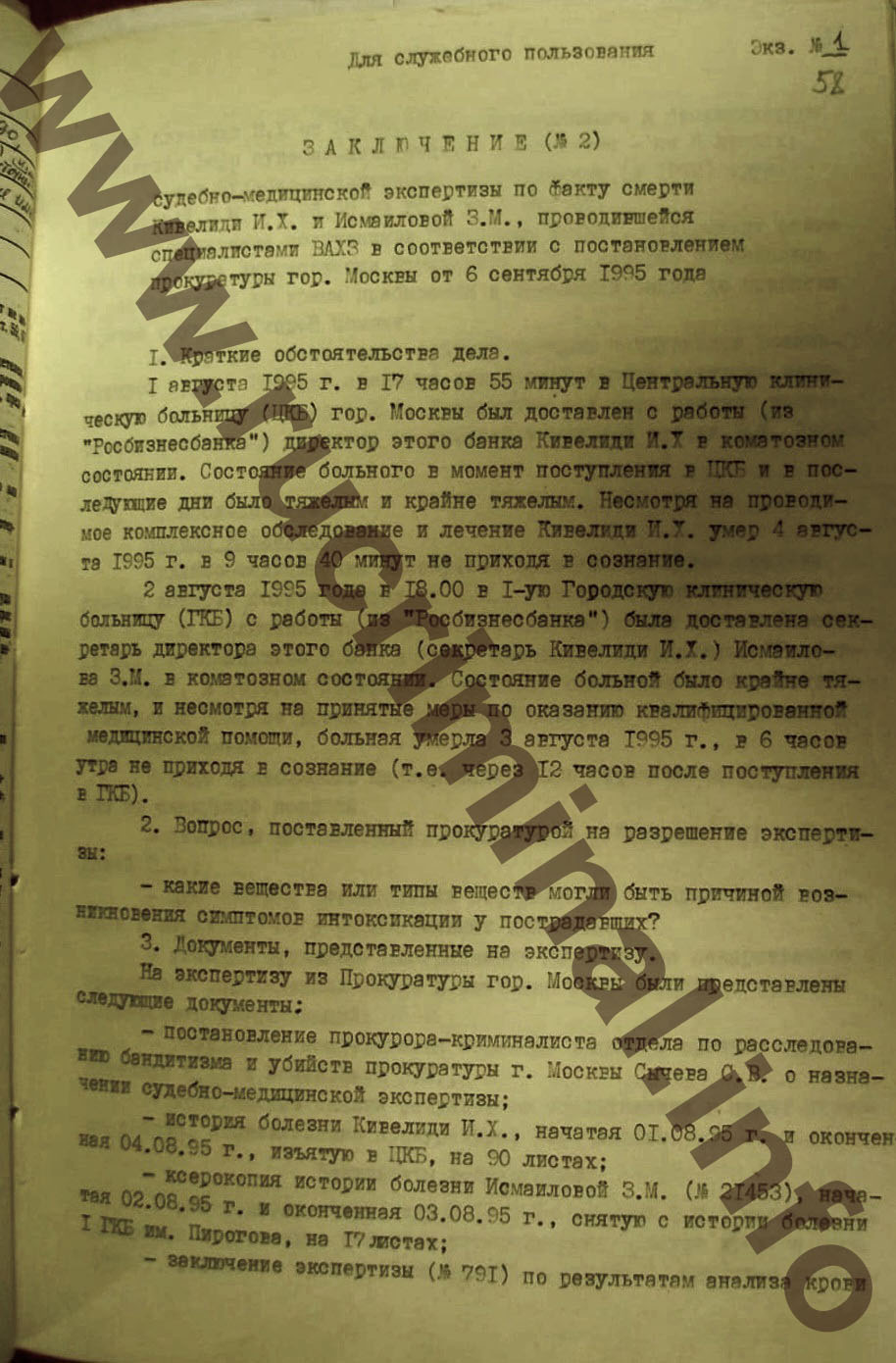
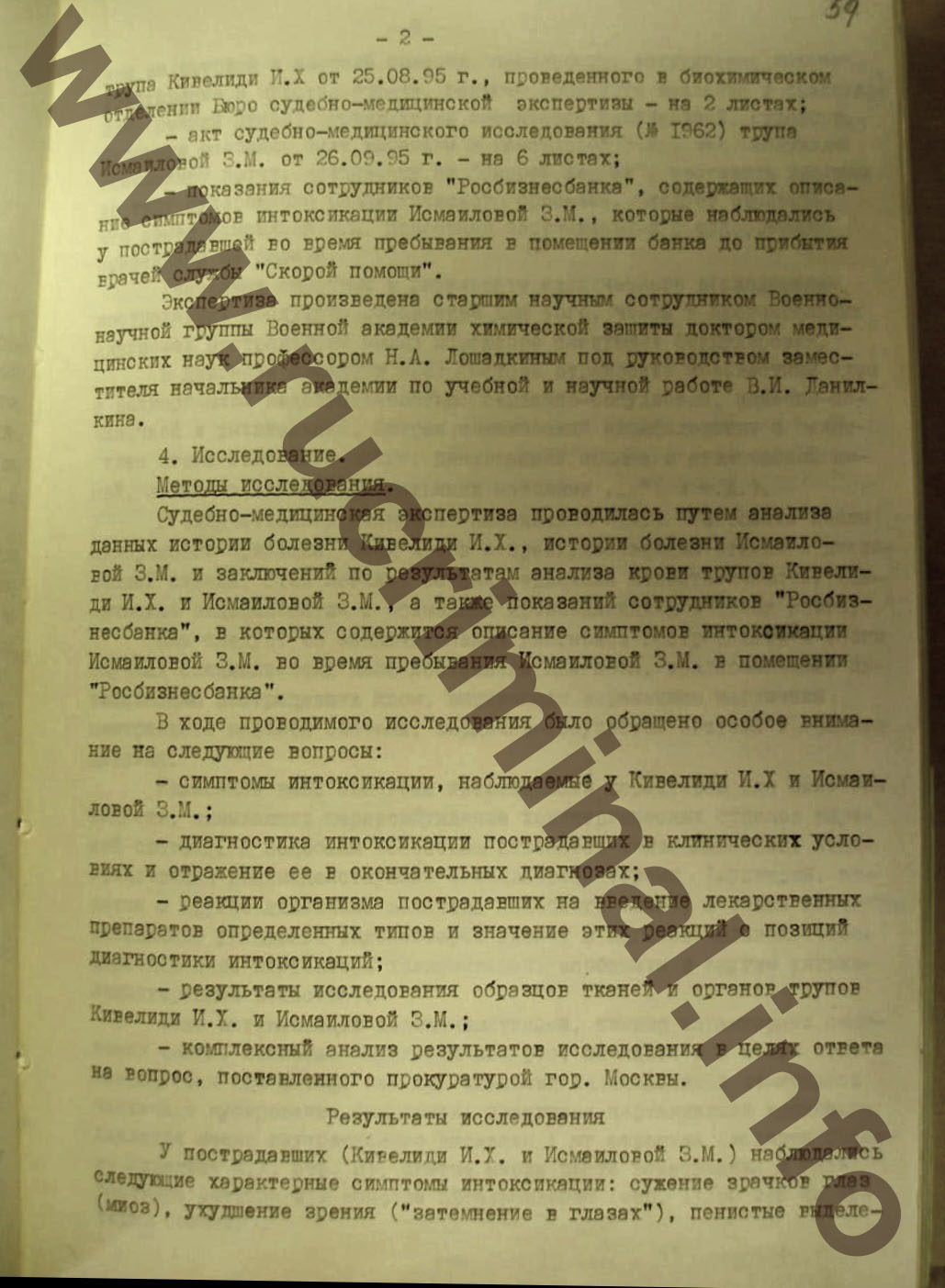
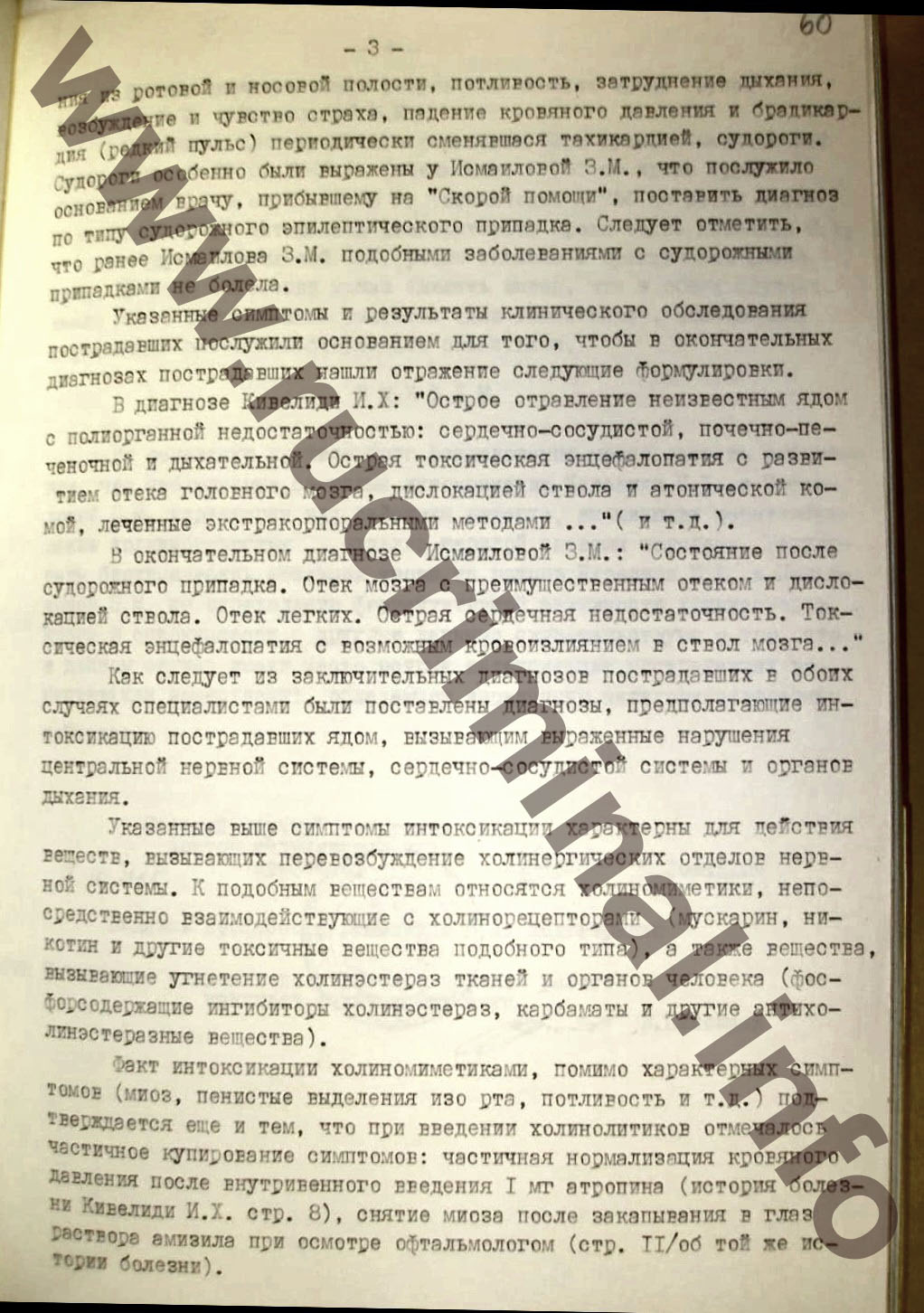
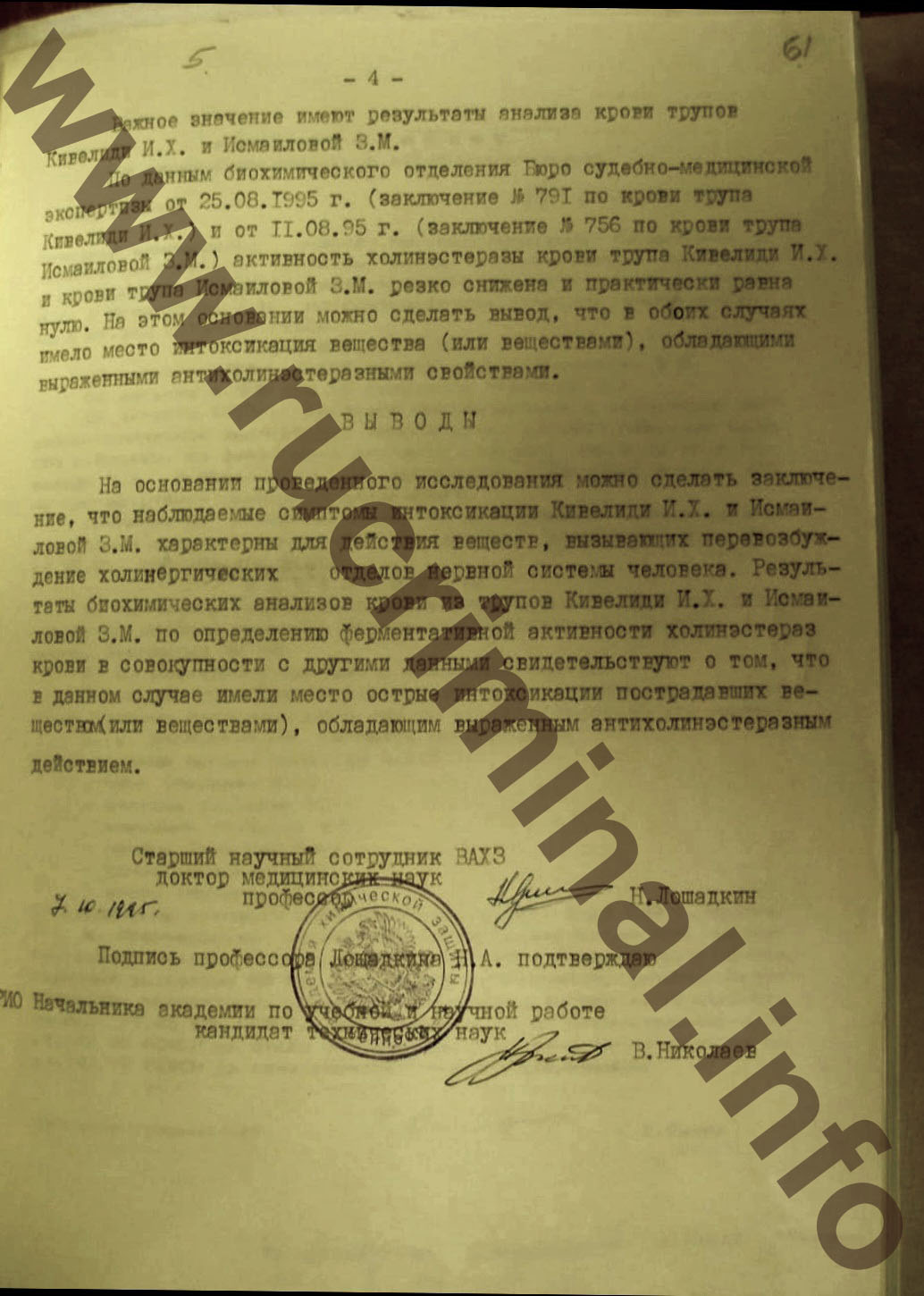
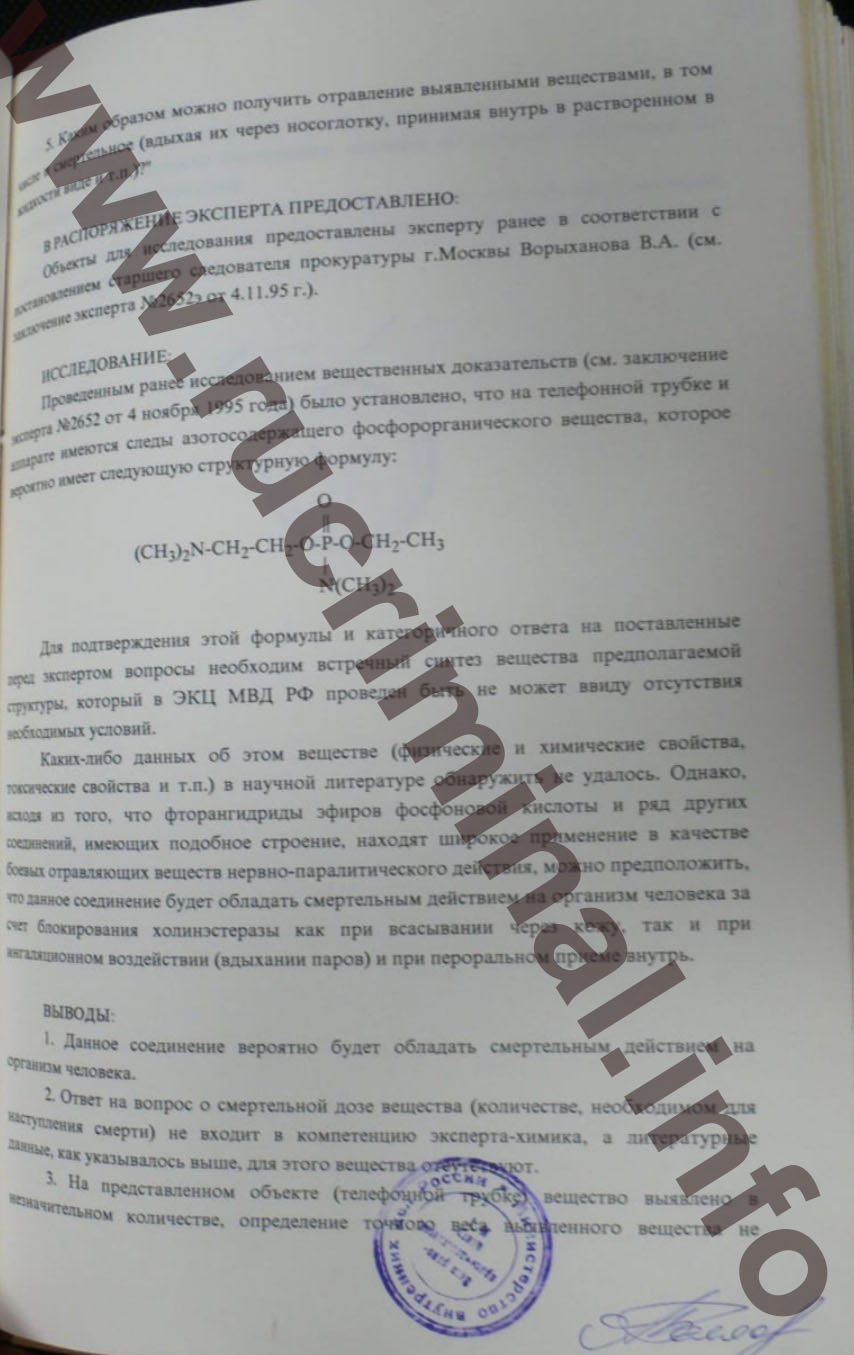
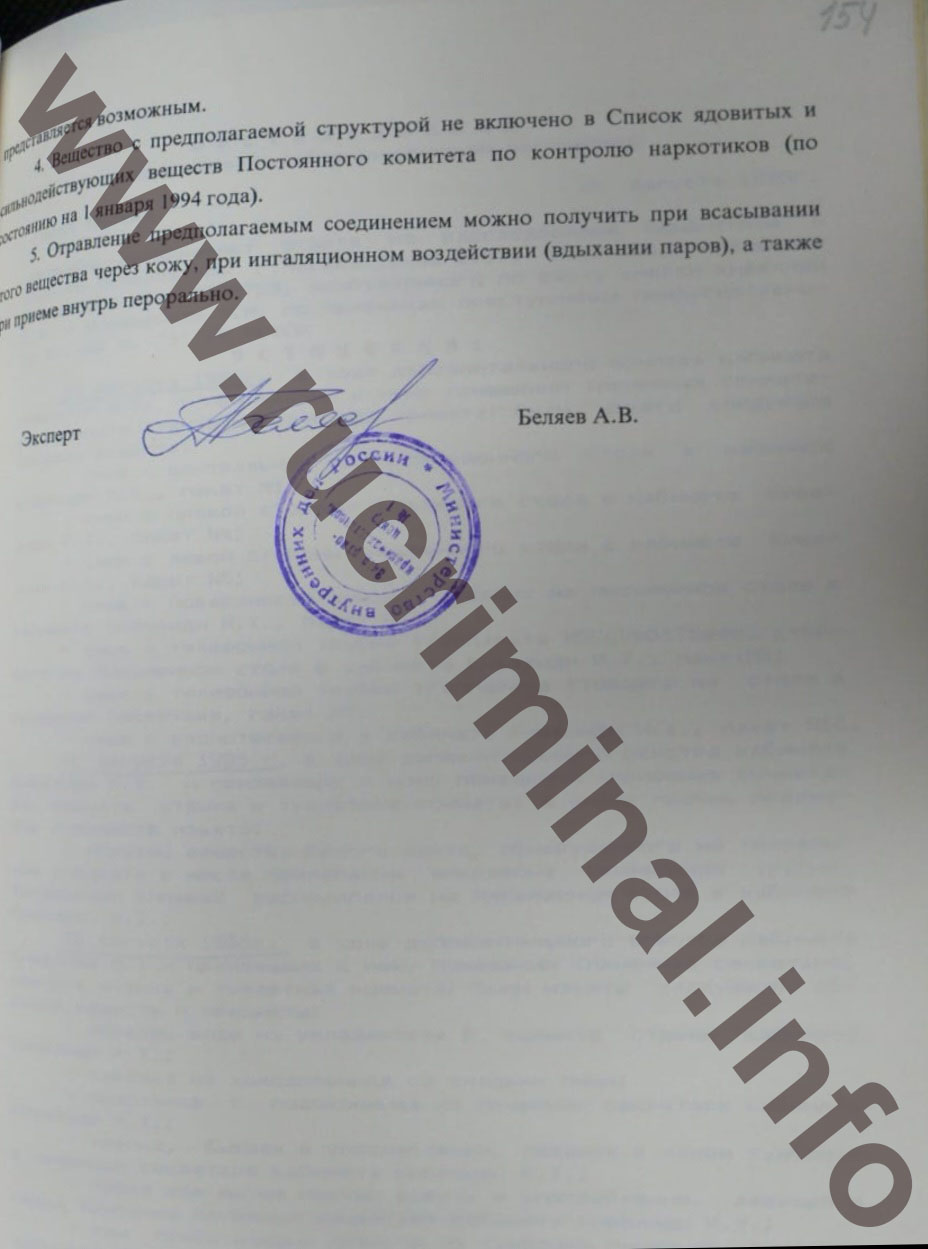
Alexey Ermakov
To be continued
Source: www.rucriminal.info

